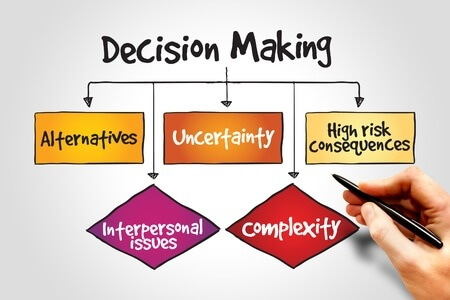 Kendra* is a newly promoted vice president of IT at a rapidly growing mid-sized firm. She’s been working overtime to staff up her department to meet the demands of her company’s growth. With each job candidate Kendra interviews, she feels the pressure to make job offers quickly. Her team is swamped, but she knows that poor hiring decisions will set them back even further.
Kendra* is a newly promoted vice president of IT at a rapidly growing mid-sized firm. She’s been working overtime to staff up her department to meet the demands of her company’s growth. With each job candidate Kendra interviews, she feels the pressure to make job offers quickly. Her team is swamped, but she knows that poor hiring decisions will set them back even further.
Kevin* is an executive for a large corporation that has seen sales drop off steadily over the last three fiscal quarters. He’s under the gun to bring expenses in line. And, he’s leading the charge to bring a new product line to market to help shore up his company’s top line. Kevin is juggling multiple priorities for how to best revitalize his company’s flagging profits; opportunities for important decisions are plentiful.
Kendra and Kevin are two executives with different leadership realities. Yet both have this in common: Many of their choices are high-stakes. A vital part of any leadership role is the ability to make decisions, both large and small. Even if your days are less pressure-filled than Kevin or Kendra’s, you still need to make smart, well-reasoned decisions for your team and organization. Here are four tips to help you succeed in that effort.
Put your nerves to good use
Sound decision-making starts with a calm mind. When you take a deep breath you activate your parasympathetic nervous system, which is instrumental in lowering blood pressure and slowing your heart rate. Jacqueline Carter is the North American director for Potential Project, a global firm that works with organizations to help train their workforce on mindfulness techniques for stress reduction and productivity improvement.
Carter has worked with Wall Street traders, a profession known for its pressure-cooker environment. She says that something as simple as intentionally pausing to take a deep breath before taking action can lead to more optimal decisions.
“It enables the mind to get out of reactivity mode into responsivity mode where we can use our higher order brain functions to make better and more ethical decisions,” she explains.
Set a realistic time horizon
When your decision has a deadline associated with it, stay vigilant with your time estimates. Projects always take longer than you think. In 1979, psychologist Daniel Kahneman and his now-deceased partner Amos Tversky proposed the “Planning Fallacy,” which hypothesized that people consistently underestimate how long something will take to complete. In this video with Inc. Magazine’s Eric Schurenberg, Kahneman (who has since won a Nobel Prize for his research on judgment and decision-making) explains how people get “anchored” in their best-case story even when previous experience indicates their decision will turn out differently.
Avoid the yes/no trap
Leaders sometimes frame up their options too narrowly with a yes/no question such as, “Should we staff up this holiday season even though revenue is down?” This leads to poor decision-making.
As this Harvard Business Review article explains, when we limit our thinking about what’s possible, we also limit the creativity of our solutions. Making decisions in a high-pressure situation tends to intensify caution. “We devote mental energy to figuring out how to avoid a loss rather than developing new possibilities to explore,” the authors write.
Give your “thinking” brain a rest
Most decision-making advice centers on the cognitive elements of deciding — your “thinking” self. You are also wired for feelings, and that part of your brain doesn’t always get the necessary attention when it comes to making business-based choices.
When the stakes are high, let the “feeling side” of your brain help inform your thinking side by focusing on a “mindless” task such as taking a walk or shooting hoops. This allows your feelings (or if you prefer, your “gut instinct”) the space to come to the surface and inform the analytical part of your brain.
“Giving our brain a little break from thinking naturally relaxes the body,” says Carter. She points out that over-thinking things creates undue stress because of “[humans’] negativity bias and natural orientation to ruminate.”
When the stakes are high, the consequences of a poor choice seem even bigger. Like Kendra and Kevin, you’ll face time constraints and important decisions throughout your leadership career. Take these four suggestions into account to help you navigate the uncertainty and pressure of leadership decision-making.
* Kendra and Kevin are composites of executives with whom I’ve worked. Their stories help illustrate the challenges faced by leaders in high-stakes situations.
This post originally appeared on Smartbrief and is used with permission.
Copyright: dizanna / 123RF Stock Photo
Leave a Reply